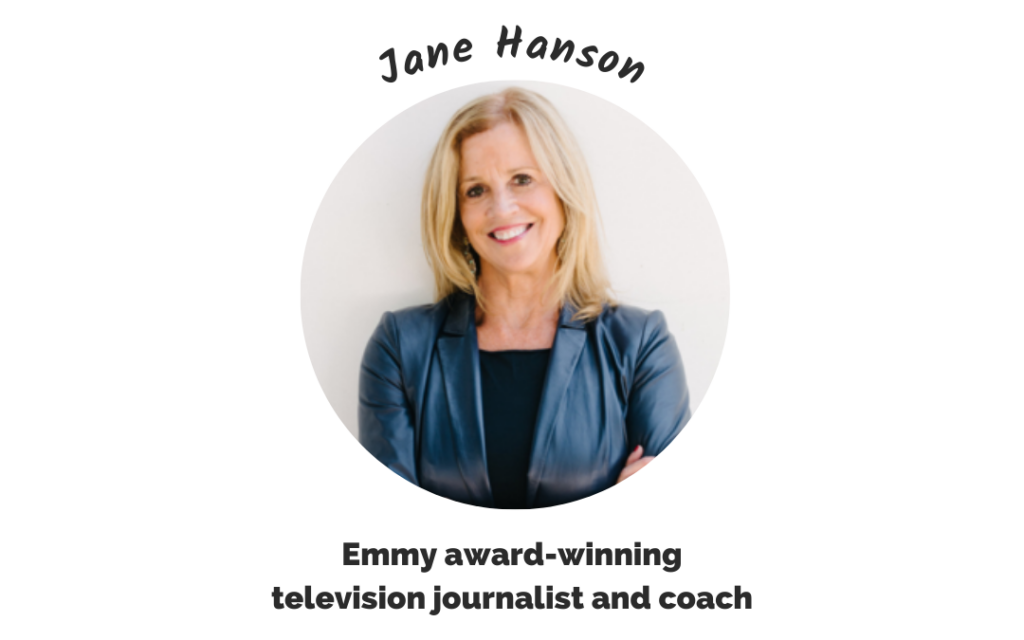In this episode of Transform Your Workplace, host Brandon Laws sits down with Jane Hanson, an Emmy award-winning television journalist and communication coach. The two dig deep into the nuances of effective communication. Discover the keys to successful communication, from clarity and body language to the unique challenges presented by technological mediums.
GUEST AT A GLANCE
Jane Hanson, an Emmy award-winning television journalist and coach, has effectively used her thirty years of media expertise to empower clients in successful communication.

A QUICK GLIMPSE INTO OUR PODCAST
🔊 Podcast: Transform Your Workplace, sponsored by Xenium HR
🎙️ Host: Brandon Laws
📋 In his own words: “The Transform Your Workplace podcast is your go-to source for the latest workplace trends, big ideas, and time-tested methods straight from the mouths of industry experts and respected thought-leaders.”
THE SECRETS TO GOOD COMMUNICATION
Effective communication is so much more than just what you say.
First and foremost, clarity is key. Your message must not only be crystal clear — “say what you mean and mean what you say” — but it has to resonate with your audience. Good communicators get to know their audience inside out — whether it’s age, gender, beliefs, or geography, tailoring your communication to fit your audience is crucial. After all, “you’re not going to talk to a Baby Boomer like you’re going to talk to a Gen Z,” guest Jane Hanson explained. And finally, we can’t underestimate the power of body language. Non-verbal cues speak volumes, shaping the immediate judgments people make. Being conscious of how you use your body language can truly enhance your communication skills.
If you want to make the most of your next conversation, prioritize your clarity, your audience, and your body language just as much as your message.
PODCAST EPISODE HIGHLIGHTS
We’re All on TV
“What everybody’s doing when they’re doing any kind of remote work — if they’re doing a Zoom or a Google Meet […] — we’re all doing TV. Let’s just think about it that way. And so, then that leads to all kinds of other elements… back to that body language thing, back to the way we look, our appearance. I learned early on when I became a very young reporter that the television camera drains you of 30% of your energy. So therefore you have to amplify. You have to be more. […] And then we have to think about time and time management and being conscious of how you have to make things smaller in a certain respect… make them more succinct. And we all know trying to squeeze 10 pounds of something in a 5-pound bag doesn’t work very well.”
Engaging Beyond 8 Seconds
“[Our attention span is] about eight seconds. And according to Microsoft, that is one second less than the time a goldfish takes to feed. […] So that means that now the engagement factor becomes so much more important. When I say an attention span of eight seconds, people will still be listening, but it might mean that a second conversation in the back of their head is going on, such as ‘What am I having for lunch’ or something like that or even […] thinking about what they’re gonna say next. […] That is a direct product of the overstimulation that we have in this world.”
The Mistakes We’re Making
“I do communications coaching at a lot of corporations, and what I see is mainly people not listening. They literally don’t listen, and then they don’t ask. In fact, I was having this whole discussion last week at one of the corporations I was at where the boss was having a lot of trouble. The CEO of the company […] was having communication issues with some of his employees. What was going on was that he would tell them about some expectations of how to do a project, and they wouldn’t even listen fully and then didn’t do the project right. They never bothered to say, ‘I don’t understand this clearly,’ or ask a question out of fear that they might be put down for that. But if you don’t ask, you’re never going to find out what the truth is or the reality is.”
“And so here’s a really specific case of somebody delivering a message, the message not being understood, but the people didn’t understand it because of their relationship. They were the employee and not the boss. They were too afraid to ask for more information. Now, what should have happened in that case? The boss should have said, ‘Is everybody really clear on where we’re going on this? And I’m happy to explain it with more clarity.’ So clearly, he wasn’t being clear at the beginning. And then they, instead of admitting that they didn’t know what to do, they just went off and said, ‘Oh, I think this is what it is,’ and they were wrong. And then they got into trouble because it wasn’t what he expected.”
Jazzing Up Your Zoom
“I like to do a little exercise with people. […] Let’s just say that we’re working on a presentation of some sort. I’ll have them deliver the presentation just as they normally would. And then I say, ‘Okay, now I want you to deliver the beginning of that presentation, but this time, I want you to do it with being as passionate as you can and overly dramatic. I want you to feel really uncomfortable.’ So they do it, and then we play both presentations back. And what they’ll discover is the second version — where they were supposed to be overly dramatic — they listen to it and they go, ‘Wow, that was better than the first.’ And I’ll say, ‘That’s because you actually paid attention to emphasizing words, using pauses, being really energetic.’ […] Allowing yourself to be more excited, more passionate, it comes across better.”
One Thing at a Time
“But we are also self-critical and, frequently, when I show people a piece of video of themselves when I’m coaching them, they’ll say, ‘Oh, I hate the way I look. I hate my voice. I hate my gestures. I hate this. I hate that.’ So I say, ‘You only get one.’ So let’s just say that you’re looking at your video, and you say I’m talking too fast. Okay. So this week we’re going to work on slowing down our conversation, and every single conversation you have, you’re going to put in your head, ‘I’m going to slow it down.’ So now, you look at your video again a week later, and in that video, you say, ‘Man, I did a great job. I’m now slowing down. But what I’m seeing now is that my eye contact is all over the place.’ Okay, so this week we’re going to work on eye contact. So it’s taking it step by step by step — because if you try to do everything at once, you’re just going to screw it up. So think about what you can do every single week or set yourself some kind of a goal.”
Modeling Humility as We Listen
“There are countless examples of people who are considered to be phenomenal leaders who walk into a room… and all they do is ask questions of people and they get to the bottom of people’s stories. […] If you’re a great leader, you have to learn what the perception of you is from other people because we are never perceived by other people the way we are perceived by ourselves. Never. So you have to see how other people perceive you, and you only find that out by asking a lot of questions.”
LEARN MORE
Connect with Jane through her website.
